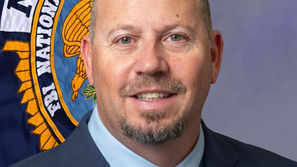Letters: The power of forgiveness
- For The Madera Tribune
- Aug 31, 2022
- 2 min read
So President Joe Biden has determined that he has the authority to forgive $10,000 in student loan debt for every borrower making less than $125,000 a year and $20,000 for those individuals who attended college on Pell Grants. I doubt that he does, particularly given the history of the federal government’s student loan programs.
The United States Government’s first foray into the student loan market was in 1958, with the National Defense Education Act (NDEA). NDEA loans were only available to students studying selected disciplines such as engineering, the sciences, and education, and were created as a direct response to the U.S.’s perceived trailing of the Soviet Union in the areas of science and technology. In 1965, the government-backed loan program was extended to students in other disciplines through the Higher Education Act of 1965.
The loans provided through the National Defense Education Act and the Higher Education Act of 1965 were extended by private financial institutions, with the federal government acting as a guarantor of the debt. But beginning in 1993, with the passage of the Student Loan Reform Act, the federal government was granted the authority to make loans directly to students rather than simply serving as a guarantor of the student debt.
This mix of government-funded and privately-funded student loans remained the model until 2010, when the Obama administration, needing a revenue source to partially offset the increase in the National Debt which would be produced by the Affordable Care Act (Obamacare), asserted that the elimination of the banks and other private middlemen would produce a revenue source for the federal government which could be used to fund other programs.
So government-insured, privately-funded student loans ceased to exist, replaced by a portfolio of government-direct student loans. The Congressional Budget Office (CBO) estimated that the new program, the Health Care and Education Reconciliation Act, would save $61 billion dollars over a period of 10 years, offsetting some of the cost of the Affordable Care Act. Those estimates were a fiction. By 2015, the CBO estimate had been revised, projecting that the new program would actually cost the American taxpayer $27 Billion over 10 years.
The extension first of federal loan guarantees and then of outright loans was authorized by Congress, the branch of government with the power of the purse under the U.S. Constitution. To push the Affordable Care Act through Congress, the American public was told that the government would operate the student loan program as a source of revenue.
So much for that promise.
Now we are told that the President has the power to forgive loans, many of which were extended to students, who consciously chose to attend costly private institutions, eschewing and frequently mocking those who attended less costly public alternatives, effectively shifting the cost of their college education from those privileged enough to attend college to the American public, many of whom never had that opportunity.
I don’t believe the President has that authority. But what do I know?
I actually had the temerity once to believe that boys will be boys, and national borders matter.
— Victor Thayer,
Upland, CA


























Comments